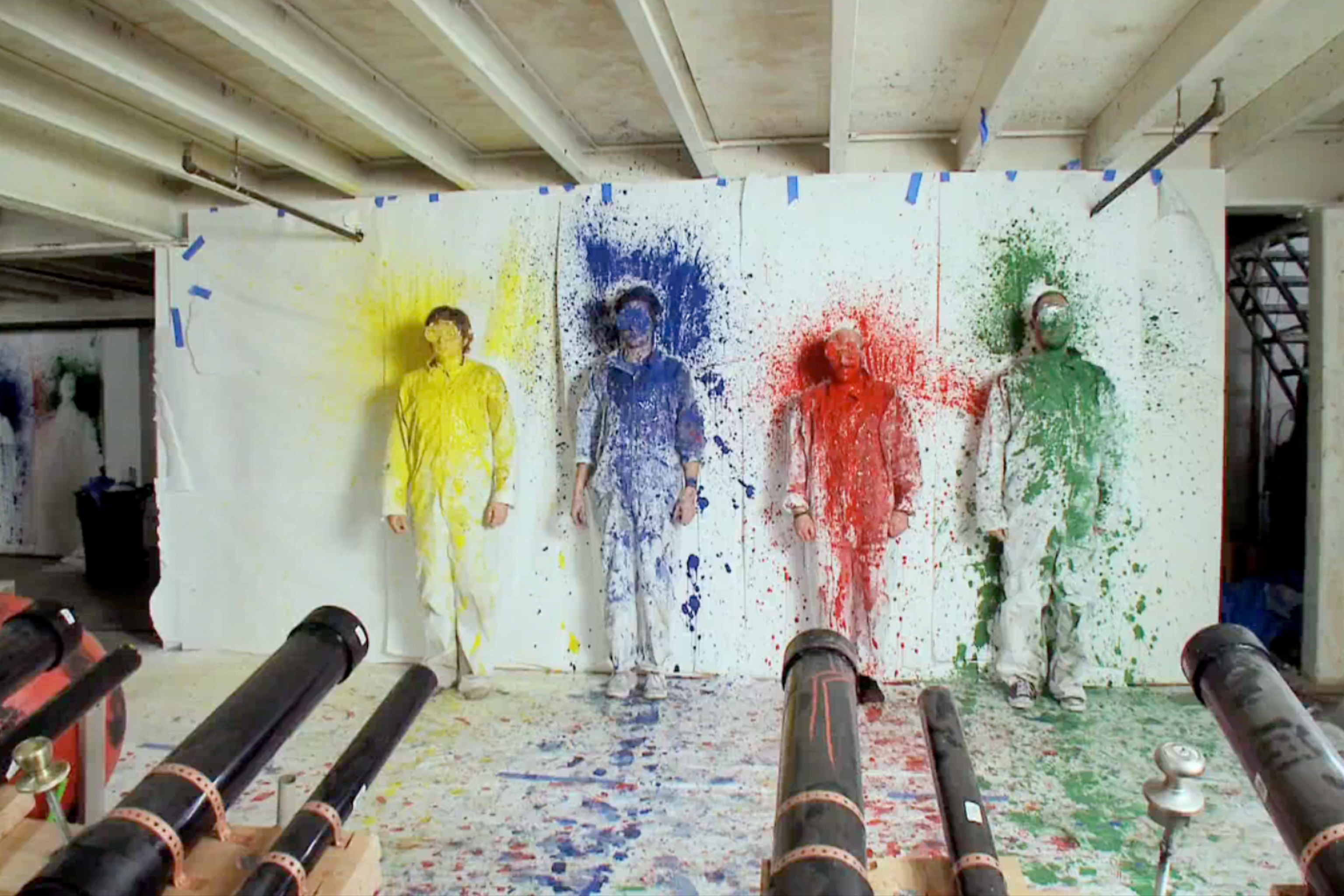Film a one-take movie
Plan and film a short one-take movie with friends using a smartphone or camera, practicing storyboarding, timing, and teamwork using safe props and simple effects.



Step-by-step guide to film a one-take movie
1st Grade Kids Learning Videos Compilation
Step 1
Pick a simple story idea that you can tell in one short scene.
Step 2
Decide how long your one-take movie will be (choose a time like 60–90 seconds).
Step 3
Assign roles to your friends (actor camera person prop manager director).
Step 4
Draw a 4-panel storyboard on paper showing the beginning middle and end and where the camera moves.
Step 5
Write the main beats and approximate times on sticky notes and stick them to the storyboard.
Step 6
Choose props and costume pieces and place them where the actors will grab them.
Step 7
Practice the actors’ movements and lines slowly without the camera.
Step 8
Walk the camera path one time while pretending to hold the camera so the camera person learns the route.
Step 9
Decide whether the camera will sit on a stack of books or be held by someone for the take.
Step 10
Set up the camera support or hand the camera to the chosen person so it is ready to record.
Step 11
Do a full timed rehearsal while recording to check timing and movement.
Step 12
Make any small changes to the storyboard props or timing based on the rehearsal.
Step 13
Film the final one-take movie in one continuous shot from start to finish.
Step 14
Watch the footage with your team and choose the best take.
Step 15
Share your finished one-take movie on DIY.org
Final steps
You're almost there! Complete all the steps, bring your creation to life, post it, and conquer the challenge!


Help!?
What can we use if we don't have a camera, sticky notes, or storyboard paper?
Use a smartphone to record, fold regular printer paper into four panels for the 4-panel storyboard, and replace sticky notes with small pieces of tape or index cards to stick the main beats to your drawing.
What should we do if the camera keeps shaking or actors keep missing their marks during the final take?
Mark the camera path and actor spots on the floor with masking tape, decide to use a stack of books or a steady hand-held grip as described in 'Decide whether the camera will sit on a stack of books or be held by someone,' and run extra full timed rehearsals while recording to fix timing and movement.
How can we adapt this one-take movie activity for younger or older kids?
For younger kids shorten the runtime to 30–45 seconds, assign fewer roles and use a simpler 2-panel storyboard during practice, while older kids can keep 60–90 seconds, use the full 4-panel storyboard and detailed sticky-note timing for more complex beats and camera moves.
How can we enhance or personalize our movie after we've filmed the final take?
Add a custom title card, simple music or sound effects in post, refine props or costume pieces you adjusted during 'Make any small changes,' and include a behind-the-scenes clip when you 'Watch the footage with your team and choose the best take' before sharing on DIY.org.
Watch videos on how to film a one-take movie
Movie Studio 14 - Full Tutorial for Beginners [+General Overview] *
Facts about filmmaking for kids
✏️ Storyboards let filmmakers plan camera moves, actor blocking, and timing ahead of time — a huge time-saver on set.
🎬 Alfred Hitchcock's Rope was edited to appear as one continuous shot by hiding cuts between long takes at clever moments.
🤝 Even kid-made short films benefit from clear roles (director, camera, sound, actor): teamwork keeps a one-take shoot running smoothly.
🎥 Russian Ark was filmed in a single 96-minute continuous take, traveling through the Winter Palace with hundreds of actors.
📱 The indie film Tangerine (2015) was famously shot entirely on an iPhone 5s, showing smartphones can make festival-ready movies.
How do I plan and film a one-take movie with my child and their friends?
What materials and equipment do we need to make a one-take movie?
What ages is filming a one-take movie suitable for?
What are the benefits and safety tips for filming a one-take movie?


One subscription, many ways to play and learn.
Only $6.99 after trial. No credit card required
![Movie Studio 14 - Full Tutorial for Beginners [+General Overview] *](https://img.youtube.com/vi/cMKWARwl5KQ/mqdefault.jpg)


![Movie Studio 15 - Full Tutorial for Beginners [+General Overview]](https://img.youtube.com/vi/WHFc-XWtmeE/mqdefault.jpg)